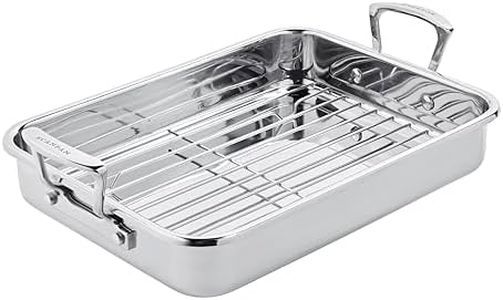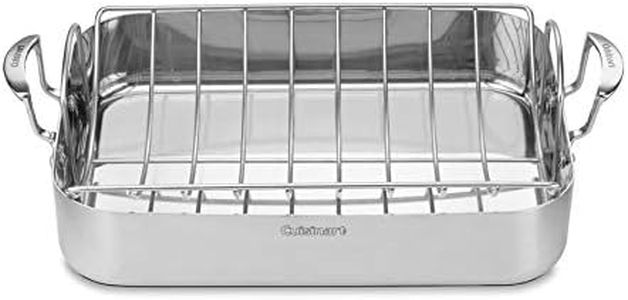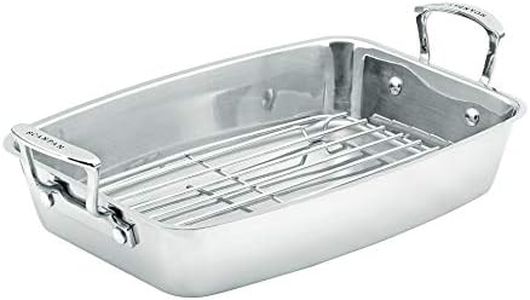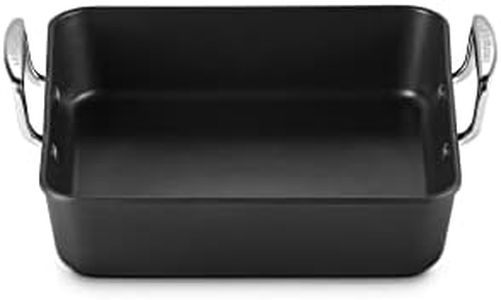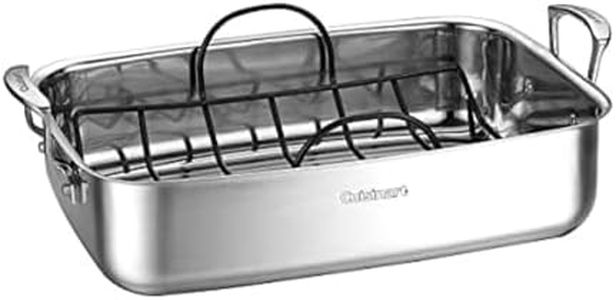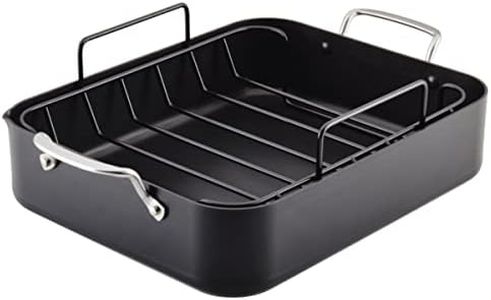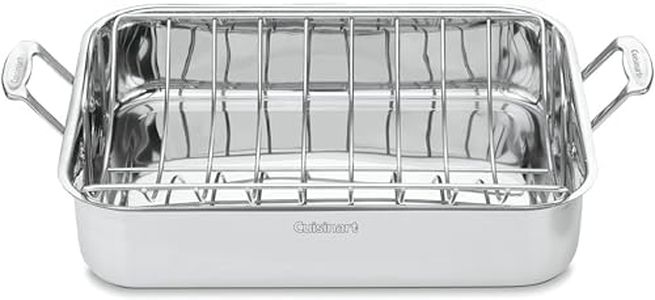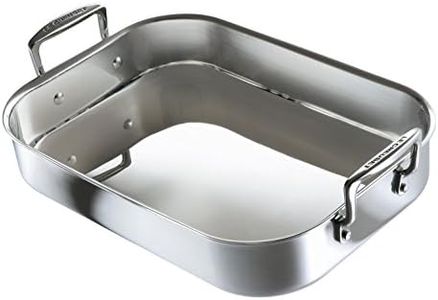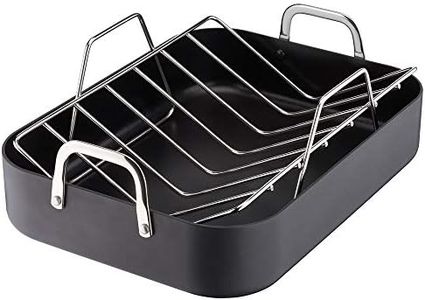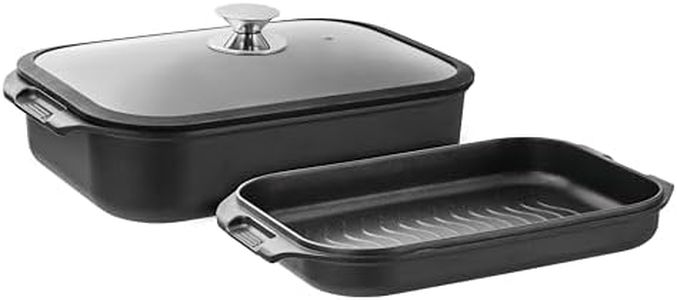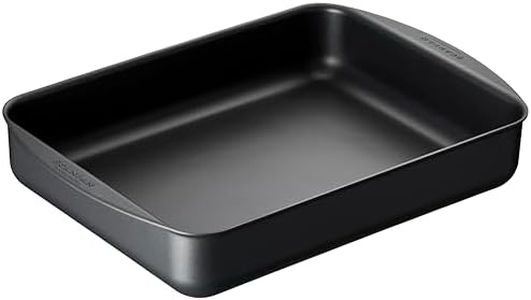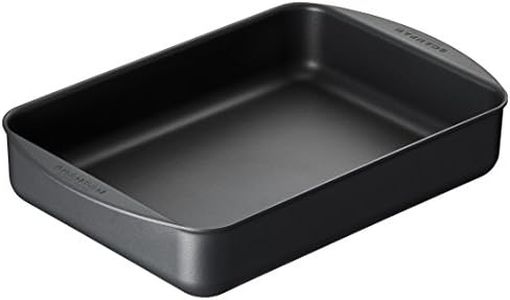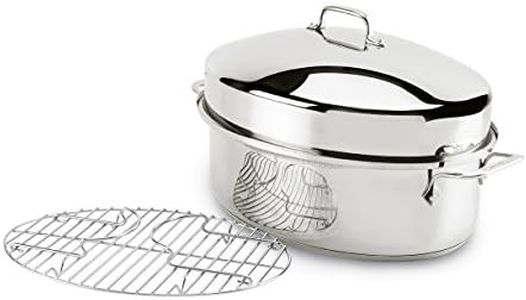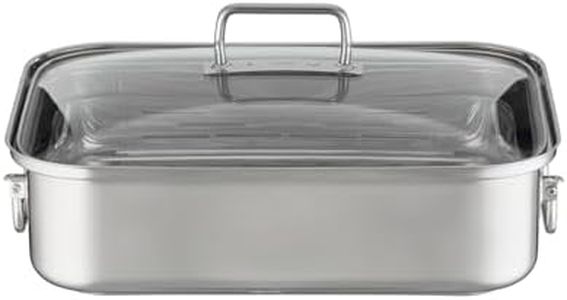We Use CookiesWe use cookies to enhance the security, performance,
functionality and for analytical and promotional activities. By continuing to browse this site you
are agreeing to our privacy policy
10 Best Roasting Pans
From leading brands and best sellers available on the web.By clicking on a link to a third party's website, log data is shared with that third party.
Buying Guide for the Best Roasting Pans
Choosing the right roasting pan can make a big difference in how your meals turn out, whether you're making a holiday roast or simply baking vegetables. The best pan for you will suit your oven size, cooking habits, and cleanup preferences. Think about what types of dishes you plan to make most often, and use the following key features to narrow down your options.SizeThe size of a roasting pan determines how much food you can cook at one time. This is usually measured by the pan's length, width, and depth. Small pans are great for dinners for two or roasting a chicken, while medium pans suit families and everyday use. Large pans are needed for big cuts of meat like turkeys or for cooking for a crowd. To pick the right size, consider the size of your oven and the kinds of meals you'll make most often; having a pan that's too large or too small makes cooking less efficient.
MaterialRoasting pans come in different materials such as stainless steel, aluminum, cast iron, and enameled varieties. Each affects heat conduction and durability. Stainless steel is sturdy and distributes heat evenly but can be heavier. Aluminum heats up quickly but may warp at high temperatures unless reinforced. Cast iron holds heat very well, making it great for slow roasts, but it’s heavy and may require seasoning or special care. Enameled pans are easy to clean and don’t need seasoning, but the enamel can chip. Match the material to your cooking style and how much care you're willing to give your pan.
HandlesHandles on a roasting pan can make lifting it in and out of the oven much safer and easier, especially when it’s full and hot. Handles can be upright, folding, or built-in. Larger, sturdy handles offer a better grip and are easier to hold with oven mitts. Check the handle style and imagine carrying the pan when it’s heavy; if you struggle with heavier weights, look for larger, easy-to-grip handles.
RackMany roasting pans come with a removable rack, which lifts food above the pan’s surface and allows fat and juices to drip below for healthier, even cooking. Some racks are flat, while others are v-shaped to cradle poultry or roasts. If you roast meats often, a rack ensures better air circulation and browning. If you mostly bake vegetables, you might not need one, so consider whether this feature fits your usual cooking.
Nonstick SurfaceSome roasting pans have a nonstick coating that helps food release easily and makes cleaning up simpler. However, nonstick coatings can become scratched or wear out over time. If you value easy cleaning and plan to avoid using sharp utensils in your pan, nonstick is convenient. For those who prefer more durability and don’t mind a bit of scrubbing during cleanup, metal surfaces without a coating may be the better bet.
DepthThe depth of a roasting pan affects how much juice or drippings are collected during cooking and how much food you can fit inside. Shallow pans (about 2 inches deep) allow more air circulation for crisping, great for roasting vegetables or browning meats. Deeper pans (up to 4 inches) can hold more liquid, which helps prevent spills and is handy for larger, juicy cuts of meat. Think about the typical dishes you make and whether you need space for liquids or something that crisps well.
